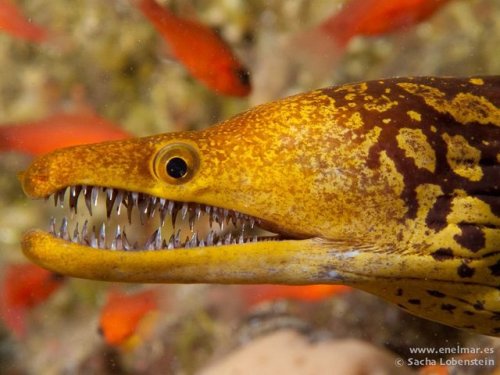I Am Not A Native Japanese Speaker But The First Word That Comes To Mind Is 懐かしい (natsukashii),
I am not a native Japanese speaker but the first word that comes to mind is 懐かしい (natsukashii), which is that warm fuzzy feeling you have when you think upon a fond memory or experience. Or that feeling you are having when you say, "sure brings back memories." Depending on context it gets translated to nostalgic, or longing, or dear, but by themselves they all feel somewhat inadequate.
For Chinese mandarin, I can think of 骗我的感情 (pian wo de gan qing) (there should be tone markers, but I don't know how to put them in, sorry!), which is literally "trick/bluff my feelings", which I am now finding quite to explain! Hmm... it's that disappointment you feel when someone sets your expectations up for something and then fails to deliver. I suppose like feeling cheated.
Hope that helps and good luck!
bobbies
YOU SPEAK A LANGUAGE AND I NEED YOUR HELP PLEASE I BEG YOU
hi. sorry about that catchy title, but you have something i need. you speak a language, maybe even multiple languages. you use emotions words everyday. i’m sure you know that languages have their own emotion words that are very hard to translate to other languages, for example, the word ‘anxiety’ doesn’t really exist in Polish, it is always a challenge to translate it in such way to convey its true meaning. Polish people don’t really feel anxiety, because they don’t have the word for it. i need your help with something: tell me an emotion word that is unique to your language or hard to translate. i’ll ask you a few questions and maybe i’ll write an essay about it using the natural semantic metalanguage (NSM). it’s a linguistic theory, whatever. please help a linguist out. i need an A. i promise i won’t get an F on your precious word.
i am interested in emotion words from every language except for Polish and English.
you can reply under this post, you can message me privately, i can give you my e-mail, whatever works for you. it would really help me if you reblogged this post, but no pressure
help education.. pretty please?
More Posts from Philosophical-amoeba and Others
The Fibonacci sequence can help you quickly convert between miles and kilometers
The Fibonacci sequence is a series of numbers where every new number is the sum of the two previous ones in the series.
1, 1, 2, 3, 5, 8, 13, 21, etc. The next number would be 13 + 21 = 34.
Here’s the thing: 5 mi = 8 km. 8 mi = 13 km. 13 mi = 21 km, and so on.
Edit: You can also do this with multiples of these numbers (e.g. 5*10 = 8*10, 50 mi = 80 km). If you’ve got an odd number that doesn’t fit in the sequence, you can also just round to the nearest Fibonacci number and compensate for this in the answer. E.g. 70 mi ≈ 80 mi. 80 mi = 130 km. Subtract a small value like 15 km to compensate for the rounding, and the end result is 115 km.
This works because the Fibonacci sequence increases following the golden ratio (1:1.618). The ratio between miles and km is 1:1.609, or very, very close to the golden ratio. Hence, the Fibonacci sequence provides very good approximations when converting between km and miles.
Curves of constant width

Source
The width of a circle is constant: its diameter.
But the circle is not the only shape that holds this pristine title. For instance let’s look at the Reuleaux triangle
Reuleaux triangle
A Reuleaux triangle is a shape formed from the intersection of three circular disks, each having its center on the boundary of the other two.

The Reuleaux triangle is the first of a sequence of Reuleaux polygons, curves of constant width formed from regular polygons with an odd number of sides.
Some of these curves have been used as the shapes of coins

To drill square holes.

They are not entirely square, their edges are fillets i.e the edges are rounded and not sharp.
This animation offers a good insight as to why that is so.

And in china, apparently on bicycles.
The man Guan Baihua shows his self-made multi-angle-wheel bicycle on May 6, 2009 in Qingdao of Shandong Province, China. Guan Baihua spent 18 months to complete this strange bicycle.

Other shapes of constant width
There are other shapes of constant width beside the Reuleaux triangle ( that has been discussed in this post ), a whole bunch of them really. Do take a look at them. ( links below )
I will leave you guys with my favorite one.

More:
If this post fascinated you, i strongly suggest you check these out. They go in-depth with the mathematics that underlies these curves and talk about other cool stuff:
An animation of non-circular rollers
Shapes and Solids of Constant Width - Numberphile
Shapes of constant width
Reuleaux Polygons,
Edit:
For those who are wondering if these are something that one would stumble upon on a regular basis. You may not find perfect ones but similiar ones definitely.
I found mine on a really old BMI calculator thingy. ( not sure what you would call it )

Have fun exploring !




File Format Posters
By Corkami, “Reverse engineering & visual documentations”
The collection of images includes all kinds of formats — GIF, ZIP and WAV are all represented, but it even gets into some real esoterica — DOLphin format executables are here if you’re a total GameCube fanatic. Each poster breaks down the format into parts, such as the header, metadata and descriptor sections, and come in a variety of formats themselves — most available in SVG, PDF and PNG.
(via Hackaday)
Book Lovers Day - Free Aeronautics e-Books from NASA

Quieting the Boom

The Shaped Sonic Boom Demonstrator and the Quest for Quiet Supersonic Flight.
Download it HERE
Elegance in Flight

A comprehensive History of the F-16XL Experimental Prototype and its Role in our Flight Research.
Download it HERE
Probing the Sky

Selected National Advisory Committee for Aeronautics (NACA) Research Airplanes and Their Contributions to Flight.
Download it HERE
Cave of the Winds

The huge Langley Full-Scale Tunnel building dominated the skyline of Langley Air Force Base for 81 years (1930–2011). Explore how the results of critical tests conducted within its massive test section contributed to many of the Nation’s most important aeronautics and space programs.
Download it HERE
A New Twist in Flight Research

A New Twist in Flight Research describes the origins and design development of aeroelastic wing technology, its application to research aircraft, the flight-test program, and follow-on research and future applications.
Download it HERE
Sweeping Forward

Developing & Flight Testing the Grumman X-29A Forward Swept Wing Research Aircraft.
Download it HERE
Thinking Obliquely

Robert T. Jones, the Oblique Wing, our AD-1 Demonstrator, and its Legacy.
Download it HERE
The Apollo of Aeronautics

The fuel crisis of the 1970s threatened not only the airline industry but also the future of American prosperity itself. It also served as the genesis of technological ingenuity and innovation from a group of scientists and engineers at NASA, who initiated planning exercises to explore new fuel-saving technologies.
Download it HERE
X-15: Extending the Frontiers of Flight

X-15: Extending the Frontiers of Flight describes the genesis of the program, the design and construction of the aircraft, years of research flights and the experiments that flew aboard them.
Download it HERE
Ikhana

Delve into the story of the Ikhana, a remotely piloted vehicle used by NASA researchers to conduct Earth science research, which became an unexpected flying and imaging helper to emergency workers battling California wildfires.
Download it HERE
NASA’s Contributions to Aeronautics, Volume 1

This first volume in a two-volume set includes case studies and essays on NACA-NASA research for contributions such as high-speed wing design, the area rule, rotary-wing aerodynamics research, sonic boom mitigation, hypersonic design, computational fluid dynamics, electronic flight control and environmentally friendly aircraft technology.
Download it HERE
NASA’s Contributions to Aeronautics, Volume 2

Continue your journey into the world of NASA’s Contributions to Aeronautics with case studies and essays on NACA-NASA research for contributions including wind shear and lightning research, flight operations, human factors, wind tunnels, composite structures, general aviation aircraft safety, supersonic cruise aircraft research and atmospheric icing.
Download it HERE
Interested in other free e-books on topics from space, science, research and more? Discover the other e-books HERE.
Make sure to follow us on Tumblr for your regular dose of space: http://nasa.tumblr.com

Aristotle’s Wheel Paradox. Can you figure out what the paradox is? (What doesn’t make sense?) More info at http://mathworld.wolfram.com/AristotlesWheelParadox.html

BHL Book Feature: The Birds of Singapore Island
Our book feature this week is The Birds of Singapore Island (1927), co-authored by John Alexander Strachey Bucknill and Frederick Nutter Chase with SciArt by Gerald Aylmer Levett-Yeats, and published by the Raffles Museum. This work is the first book on the birds of Singapore!
Our featured illustration is a Greater Racket-tailed Drongo (Dicrurus paradiseus platurus). This book is written in an informal, non-scientific style to appeal to tourists and bird enthusiasts, and the description of the Greater Racket-tailed Drongo is a good example of this writing style.

All this week, we will be sharing several of the 31 plates from The Birds of Singapore Island, which was digitized for BHL by National Library Board, Singapore. You can view all of the plates from this work in our Flickr album, and check out our blog post, which was written by Ong Eng Chuan, Senior Librarian of the National Library Board, Singapore.

Black Holes are not so Black (Part 3) - Gravitational Waves
The existence of Gravitational Waves have been confirmed. But you probably have heard that. In this post, we will break down this profound discovery into comprehend-able chunks.
This is going to be a amazing journey. Ready ?
Redefining Gravity
When we usually talk of Gravitation we are bound to think like Newton, where objects are assumed to exerting a force upon each other.
Like imaginary arrows of force in space. But this picture, although good for high school crumbled, with the advent of Einstein’s theory of Relativity.

What is the Space-Time Fabric?
Think of space-time fabric as an actual cloth of fabric. ( An analogy )
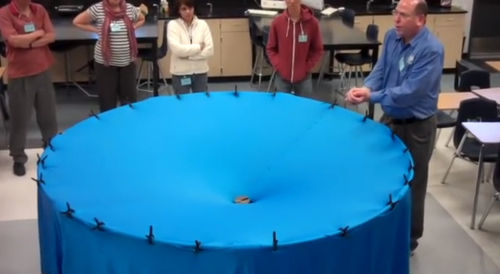
When you place an object on the fabric, the cloth curves. This is exactly what happens in the solar system as well.

The sun with such a huge mass bends the space-time fabric. And the earth and all the planets are kept in orbit by following this curvature that has been made by the sun.
Attributing to the various masses of objects, the way they bend this fabric also varies.
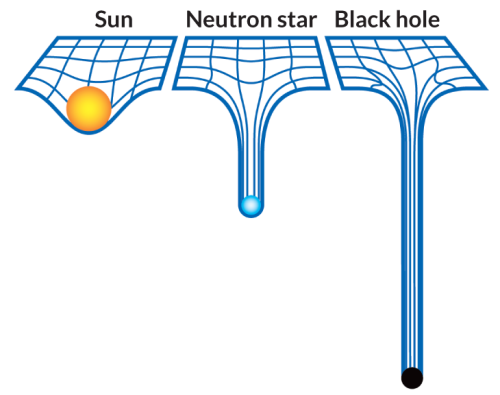
What are Gravitational Waves?
If you drop an object in a medium such as water, they produce ripples that propagate as waves through the medium.

Similarly, Gravitational waves are ripples in space-time fabric produced when you drag heavy objects through space time.
And the nature of these waves is that they don’t require a medium to propagate.
How do you make one?
Everything with mass/energy can create these waves.
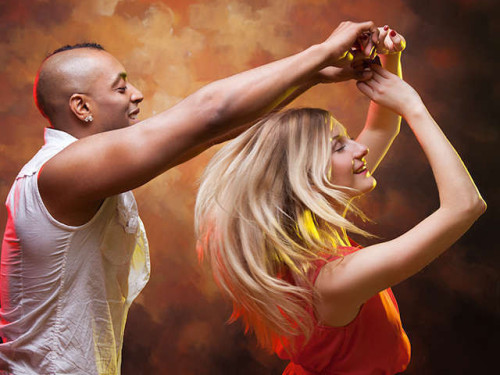
Source
Two persons dancing around each other in space too can create gravitational waves. But the waves would be extremely faint.
You need something big and massive accelerating through space-time in order to even detect them.

And orbiting binary stars/black holes are valuable in this retrospect.
How can you detect them?
Let’s turn to the problem to detecting them assuming you do find binary stars/black-holes in the wondrous space to suite your needs.
Well, for starters you cannot use rocks/ rulers to measure them because as the space expands and contracts, so do the rocks. ( the distances will remain same in both the cases )

Here’s where the high school fact that the speed of Light is a constant no matter what plays an important and pivotal role.
If the space expands, the time taken for light to reach from A to B would be longer. And if it contracts, the time taken for it to reach from A to B would be smaller.

PC: PHDComics
By allowing the light waves from the contraction and expansion to interfere with each other, such as done in any interferometry experiment we can detect the expansion or contraction. Voila!
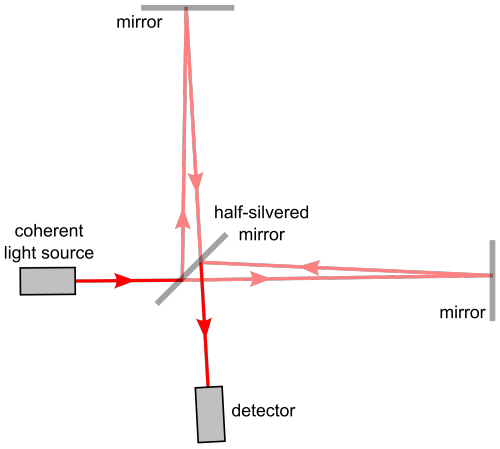
And this is exactly what they did! ( on a macroscopic level ) at LIGO (Laser Interferometer Gravitational-Wave Observatory)
14 September 2015

Two Black Holes with masses of 29 and 36 solar masses merged together some 1.3 Billion light years away.
Two Black Holes colliding is the header animation of the ‘Black Holes are not so Black Series’, in case if you haven’t noticed.

The merger of these two black holes results in the emission of energy equivalent to 3 solar masses as Gravitational Waves.
This signal was seen by both LIGO detectors, in Livingston and Hanford, with a time difference of 7 milliseconds.
And with the measurement of this time difference, physicists have pronounced the existence of Gravitational Waves.

Source
All this is most certainly easily said than done and requires meticulous and extensive research, not to mention highly sensitive instruments.
Had they not have measured this time difference, we might have had to wait for the merger for more massive black holes to collide and maybe even build more sensitive instruments to detect these waves.
And Einstein predicted this a 100 years back!

Mind Blown!
Note: Hope you are able to understand and appreciate the profundity of the discovery done by mankind.
** All animations used here are merely for Educational purposes. If you have any issues, please write to us at : 153armstrong@gmail.com
Categorizing Posts on Tumblr
Millions of posts are published on Tumblr everyday. Understanding the topical structure of this massive collection of data is a fundamental step to connect users with the content they love, as well as to answer important philosophical questions, such as “cats vs. dogs: who rules on social networks?”
As first step in this direction, we recently developed a post-categorization workflow that aims at associating posts with broad-interest categories, where the list of categories is defined by Tumblr’s on-boarding topics.
Methodology
Posts are heterogeneous in form (video, images, audio, text) and consists of semi-structured data (e.g. a textual post has a title and a body, but the actual textual content is un-structured). Luckily enough, our users do a great job at summarizing the content of their posts with tags. As the distribution below shows, more than 50% of the posts are published with at least one tag.

However, tags define micro-interest segments that are too fine-grained for our goal. Hence, we editorially aggregate tags into semantically coherent topics: our on-boarding categories.
We also compute a score that represents the strength of the affiliation (tag, topic), which is based on approximate string matching and semantic relationships.
Given this input, we can compute a score for each pair (post,topic) as:

where
w(f,t) is the score (tag,topic), or zero if the pair (f,t) does not belong in the dictionary W.
tag-features(p) contains features extracted from the tags associated to the post: raw tag, “normalized” tag, n-grams.
q(f,p) is a weight [0,1] that takes into account the source of the feature (f) in the post (p).
The drawback of this approach is that relies heavily on the dictionary W, which is far from being complete.
To address this issue we exploit another source of data: RelatedTags, an index that provides a list of similar tags by exploiting co-occurence patterns. For each pair (tag,topic) in W, we propagate the affiliation with the topic to its top related tags, smoothing the affiliation score w to reflect the fact these entries (tag,topic) could be noisy.

This computation is followed by filtering phase to remove entries (post,topic) with a low confidence score. Finally, the category with the highest score is associated to the post.

Evaluation
This unsupervised approach to post categorization runs daily on posts created the day before. The next step is to assess the alignment between the predicted category and the most appropriate one.

The results of an editorial evaluation show that the our framework is able to identify in most cases a relevant category, but it also highlights some limitations, such as a limited robustness to polysemy.
We are currently looking into improving the overall performances by exploiting NLP techniques for word embedding and by integrating the extraction and analysis of visual features into the processing pipeline.
Some fun with data
What is the distribution of posts published on Tumblr? Which categories drive more engagements? To analyze these and other questions we analyze the categorized posts over a period of 30 days.
Almost 7% of categorized posts belong to Fashion, with Art as runner up.

The category that drives more engagements is Television, which accounts for over 8% of the reblogs on categorized posts.

However, normalizing by the number of posts published, the category with the highest average of engagements per post isGif Art, followed by Astrology.

Last but not least, here are the stats you all have been waiting for!! Cats are winning on Tumblr… for now…

-
 cupcakedyke reblogged this · 7 years ago
cupcakedyke reblogged this · 7 years ago -
 cupcakedyke liked this · 7 years ago
cupcakedyke liked this · 7 years ago -
 wulfrann reblogged this · 7 years ago
wulfrann reblogged this · 7 years ago -
 wulfrann liked this · 7 years ago
wulfrann liked this · 7 years ago -
 cupcakedyke reblogged this · 7 years ago
cupcakedyke reblogged this · 7 years ago -
 kaukaisin reblogged this · 8 years ago
kaukaisin reblogged this · 8 years ago -
 well-imagine-this liked this · 8 years ago
well-imagine-this liked this · 8 years ago -
 harm-money liked this · 8 years ago
harm-money liked this · 8 years ago -
 thethursdaynext liked this · 8 years ago
thethursdaynext liked this · 8 years ago -
 moonsleep liked this · 8 years ago
moonsleep liked this · 8 years ago -
 sillydreamerpinguin reblogged this · 8 years ago
sillydreamerpinguin reblogged this · 8 years ago -
 fritalianblr reblogged this · 8 years ago
fritalianblr reblogged this · 8 years ago -
 zorume-star liked this · 8 years ago
zorume-star liked this · 8 years ago -
 froglamorous reblogged this · 8 years ago
froglamorous reblogged this · 8 years ago -
 solsticisme reblogged this · 8 years ago
solsticisme reblogged this · 8 years ago -
 froglamorous liked this · 8 years ago
froglamorous liked this · 8 years ago -
 deercay liked this · 8 years ago
deercay liked this · 8 years ago -
 ambisyllabicity reblogged this · 8 years ago
ambisyllabicity reblogged this · 8 years ago -
 shrinking-but-shining reblogged this · 8 years ago
shrinking-but-shining reblogged this · 8 years ago -
 ellyhadfield-blog liked this · 8 years ago
ellyhadfield-blog liked this · 8 years ago -
 verolikesquotes liked this · 8 years ago
verolikesquotes liked this · 8 years ago -
 boring-one liked this · 8 years ago
boring-one liked this · 8 years ago -
 chezoim reblogged this · 8 years ago
chezoim reblogged this · 8 years ago -
 littlehappyraven liked this · 8 years ago
littlehappyraven liked this · 8 years ago -
 traveladventureimagine reblogged this · 8 years ago
traveladventureimagine reblogged this · 8 years ago -
 homeland-snooping liked this · 8 years ago
homeland-snooping liked this · 8 years ago -
 spacciobanane liked this · 8 years ago
spacciobanane liked this · 8 years ago -
 smaragdtigereye liked this · 8 years ago
smaragdtigereye liked this · 8 years ago -
 darlingcabaret liked this · 8 years ago
darlingcabaret liked this · 8 years ago -
 slangblr reblogged this · 8 years ago
slangblr reblogged this · 8 years ago -
 pdermenci1997-blog liked this · 8 years ago
pdermenci1997-blog liked this · 8 years ago -
 ihopeikeepthisup reblogged this · 8 years ago
ihopeikeepthisup reblogged this · 8 years ago -
 grumpy-old-woman reblogged this · 8 years ago
grumpy-old-woman reblogged this · 8 years ago -
 verysoftstudyblr-blog reblogged this · 8 years ago
verysoftstudyblr-blog reblogged this · 8 years ago
A reblog of nerdy and quirky stuff that pique my interest.
291 posts


